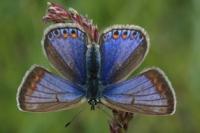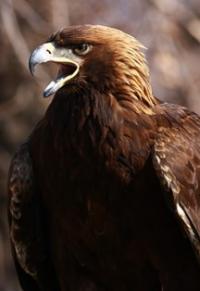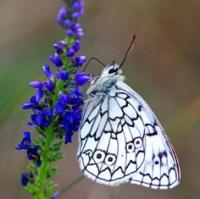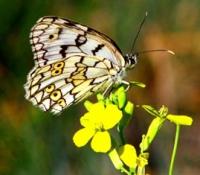Вы здесь
Fauna of Central Asia.





Walking tour to Fauna of Central Asia.
«A lake is the landscape's most beautiful and expressive feature. It is earth's eye; looking into which the beholder measures the depth of his own nature»
Henry David Thoreau.
Popular destinations to Central Asia.
By the nature of the fauna, the territory of Central Asia differs sharply from other regions, which is associated with the history of the formation of the territory and the extreme peculiarity of the ecological conditions that have changed little on desert plains since the end of the Neogene.
The specificity of the fauna of Central Asia is primarily determined by the wide distribution of animals that have adapted to their existence in the conditions of the desert, which left a deep imprint on their entire organization.
Animals in the desert have to adapt to extremely unfavorable conditions for the existence of the organism excessive heat and lack of moisture. Experiments carried out directly in nature have established that temperatures, to which sand in the desert (60–72 ° or more) is heated on a summer day, are detrimental to many of its inhabitants (jerboas, gophers, lizards, insects).
Animals save themselves from the lethal effects of high temperatures, either by digging deep into the sand, where the temperature is lower than on the surface, or climbing onto the branches of bushes, away from the hot sand, hiding in the shade or quickly running across the hot soil.
Many animals of the desert are nocturnal, for a day climbing into burrows or burying in the sand and thus hiding from the heat of the day. In search of water, many desert animals must travel long distances. The lack of water in the desert led to the fact that some desert animals do not drink water at all and do not even know how to drink (yellow gopher).
They get the necessary moisture from plants, but predators from the blood of their victims. The animals of the ephemeral deserts of the south of Central Asia, leading an active lifestyle in the spring, in the hot summer season without rain during hibernation receive moisture due to the oxidation of their accumulated fat.
The richness of the species composition and originality of the fauna of Central Asia are due to the abundance of specialized endemic forms. Especially a lot of endemics, of undoubted origin, are among the inhabitants of the sandy deserts, where their own range of desert formation among animals has long been observed. In the fauna of the sandy deserts of Central Asia, several endemic genera of mammals are known (pinto, gopher, two genus of jerboas).
Many facts indicate a rather large antiquity of a significant part of animal species that are part of the Central Asian fauna in general. The fauna of Central Asia, in particular its flat part, is characterized by a general subtropical appearance, determined by the existence of significant groups, which are characteristic mainly of the subtropical and tropical belts.
Typically, for example, many heat-loving lizards and snakes in sandy and clay deserts, bats in cities, oases and foothills, brightly colored birds in oases (green and golden bee eaters (Meropidae), sizovoronka, pink starling).
It is also characterized by a rather wide distribution of termites, mosquitoes, large arachnids (phalanxes), large snakes and lizards (monitor lizards), an abundance of poisonous animals (snakes, scorpions, karakurt spiders) in comparison with other parts of Central Asia Academician E. N. Pavlovsky, in general, increases dramatically as we move from the belt of temperate latitudes to the subtropical and tropical belts.
The rich fauna of Central Asia is diverse not only in species composition, but also in origin. The species included in it belong to different faunistic complexes, each of which has its own history, its own way of settlement and ecological features.
In the composition of the fauna of Central Asia, in addition to endemic forms, there are species and groups related to those of North and Central Africa, Central Europe, Asia Minor, India, the Himalayas, Central Asian highlands, Kazakhstani steppes, zones of Eurasia.
According to the ideas of most modern zoo geographers, Central Asia with the adjacent parts of Central Kazakhstan belongs to the Central Asian region of the Arctic. Zoo is a geographical area and its fauna is like the western outpost of the Central Asian fauna.
However, an analysis of the desert plains fauna shows that the closest kinship ties with Central Asia are found in the fauna of the northern (Kazakhstan), mainly clay, deserts, and in the southern, mostly sandy, deserts, these connections are less pronounced. In the lowland deserts, especially in the south of Central Asia, and in the foothills, in addition to endemics and forms common with the deserts of Central Asia, there are numerous representatives of the Mediterranean fauna and species that have direct genetic links with the fauna of Africa.
So, if in the fauna of the mountainous regions of Central Asia, in general, there are the closest links with the Central Asian highlands, then in the flat desert territory two separate faunas contact. The border between their ranges is vague due to the fact that in different groups of animals the quantitative ratio of endemic Central Asian forms, forms of Central Asian and Mediterranean African origin is different.
For example, in the fish fauna of Central Asia, according to L. S. Berg, there are no African elements (due to the long-standing disunity of the river systems of North Africa, on the one hand, and Front and Central Asia, on the other).
Fish fauna of waters in the mountains of Central Asia, of Asian-Asian origin, on the desert plains - mixed. In the composition of the order of beetles are dominated by endemic forms. The fauna of birds, on the contrary, is poor in endemics, and in the south of Central Asia (Turkmenistan) from desert forms a greater number belongs to the “Sahara Desert Faunistic Complex” and much less to the “Gobi” (G. P. Dementiev).
Among the mammals of the plains of Central Asia, in addition to endemics, there are numerous species that are common with the deserts of Central Asia, but there are also species of African origin, which are still smaller than those of Central Asian (V.G. Geptner).
The African origin of the Central Asian porcupines, steppe tortoises, and most gerbils has been established. Thus, for many groups of terrestrial animals of Central Asia, along with the wide distribution of endemics and links with Central Asian fauna, there is no doubt that genetic ties with Mediterranean African fauna are present.
At the same time, the mixed character of the fauna of Central Asia is more pronounced on the flat part of the territory, especially in the south, and less pronounced in the mountains, where there is much more extensive connection with the Central Asian highlands.
Therefore, on the territory of Central Asia, first of all, there are two main zoo geographical provinces - Turan desert and mountains of Central Asia (B. A. Kuznetsov). The southernmost part of the territory (Kopetdag and Murghab-Tedzhen districts) belongs to the province of Iran-Afghan highlands. In addition, in the north of the territory we are considering, a Kazakhstani province is allocated, including the northern regions of the deserts and mountains of Central Asia and Central Kazakhstan.
Along with a certain commonality in the composition of the fauna of the mountains of Central Asia, there is a significant heterogeneity, which is why all researchers engaged in zoo geographical zoning of the Central Asian mountain regions identified the western and eastern parts of the Tien Shan and Pamir mountain systems as independent plots (regions).
Alai In the differentiation of the animal world of mountainous areas, an important role belongs to the high-altitude zones of environmental conditions associated with the high-altitude landscape zones. Many Central Asian wild animals are hunted for meat (roe deer, wild goats, sheep, gazelle, saiga, from birds - mountain chicken, mountain turkeys, pheasants, ducks, geese).
Some animals are fished because of fur (marten, foxes, marmots, etc.), however, in general, the fur trade does not play a significant role in the national economy of the Central Asian republics and Kazakhstan. For different crafts and for the manufacture of shoes can be used durable and beautiful skin of the monitor lizard.
Tasty meat and eggs gives widespread steppe turtle. Fishing is well developed on rivers and lakes. Some wild animals of Central Asia can be easily tamed and made useful pets. Many predators are considered to be harmful animals. Wolves, for example, cause damage to herds grazing in the mountains; reed cat and jackal exterminate valuable game birds.
Dangerous pests of mountain pastures - vole mice. The forest dormouse, a Turkestan rat, causes great harm to the walnut forests and gardens. These rats, as well as a Turkestan mouse and a grayish hamster, destroy food supplies in houses and barns.
Of insects - pests of agriculture in the first place are locusts; they are exterminated by pink starlings and other useful birds. Among the harmful animals of Central Asia are poisonous, as well as distributors and pathogens of various diseases.

Authority:
N. A. Gvozdetsky, N. I. Mikhaylov. "Physical geography of the USSR. Asian part. The edition third corrected and added. Moscow "Thought" of 1978. http://tapemark.narod.ru/geograf/1_5_5.html
Photos by
Alexander Petrov.







